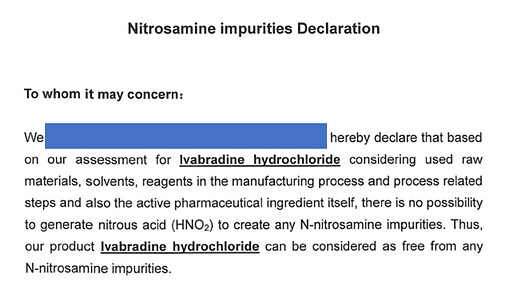I believe we agree that the step of risk assessment is critical in defining the need or not of analytical work, and the need for a remediation or mitigation strategy. I wonder if you can share what has been your real experience with your API suppliers on gathering the necessary information for the risk assessment. I do recognize that there is really proactive supplier working closely with their customer on building robust risk assessments, I frequently find this sort of ‘nitrosamine statement’ coming from suppliers. What has been your experience and how did you go about this?
Hi Naiffer,
In my case, most of the API suppliers have given a detailed risk assesment, where further clarifications were asked when needed. Nevertheless, we have received one page statements, with no further opportunity to have something else, where bibliography and a sistematic evaluation took more prominence to de-risk or decide testing.
My two cents here,
Although the responsibility of final risk assessment and confirmatory testing of nitrosamines lies with the drug product manufacturer, in majority of the known cases, the source of potential nitrosamine impurities contamination has been traced to the API. Therefore, a comprehensive risk assessment on the drug substance is much needed since there is little chemistry involved with the drug product manufacturing process.
The level of information provided in the specimen declaration is not sufficient to rule out nitrosamine risk even in a regulatory starting material, leave alone an active substance.
Whilst most of the API manufacturers provide a comprehensive risk assessment, some still prefer to provide such generic declarations which are of little or no use in the overall risk assessment.
The drug product manufacturers should insist the API supplier to fill the EMA template which is based on Currently identified risk factors for presence of nitrosamines (Q4 of EMA/409815/2020)
Many drug product manufacturers have framed their own questionnaires which should serve as a basis for the overall nitrosamine risk assessment.
Something I would add, is that as of now, most of the detected nitrosamines are NDSRIs. Where the source are more traced to the finished product manufacturing process.
CHMP: Agendas, minutes and highlights | European Medicines Agency (europa.eu)
However, I would also say that a robust drug substance risk assessment is key as part of the evaluation.
Couldn’t agree more.
An in-depth knowledge of the drug substance related impurities (process-cum-degradation) is necessary to understand the potential formation of NDSRIs.
